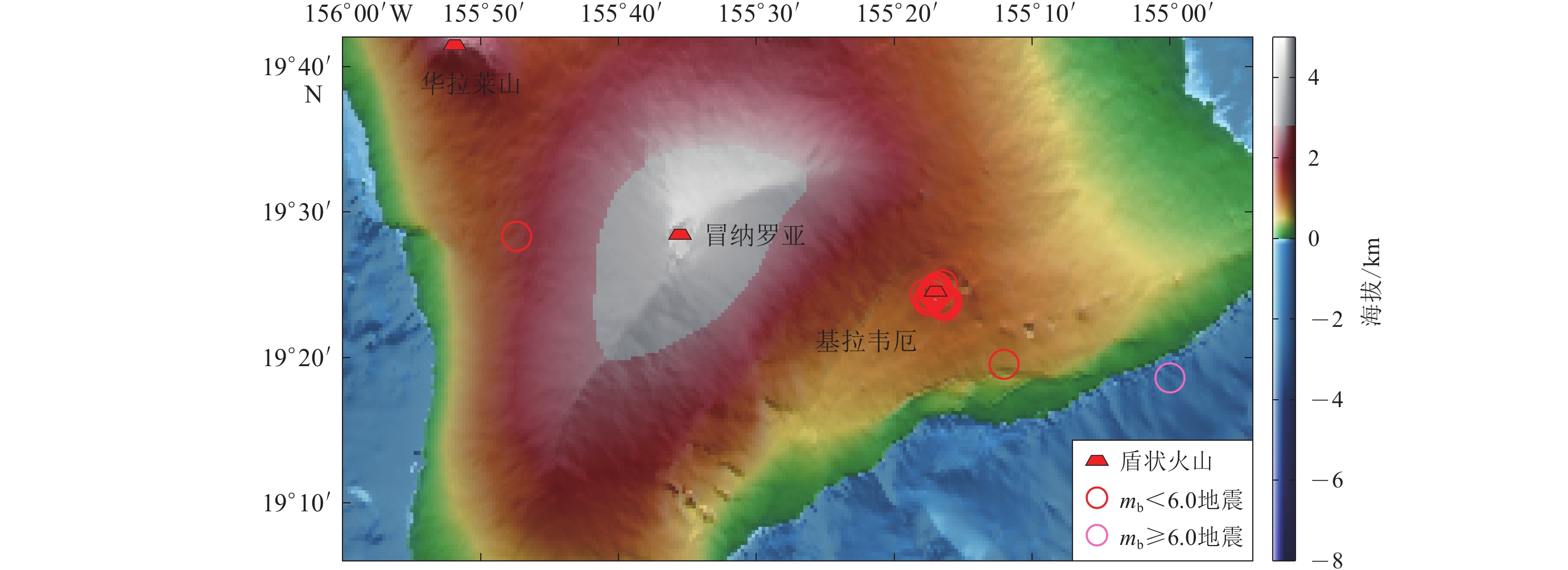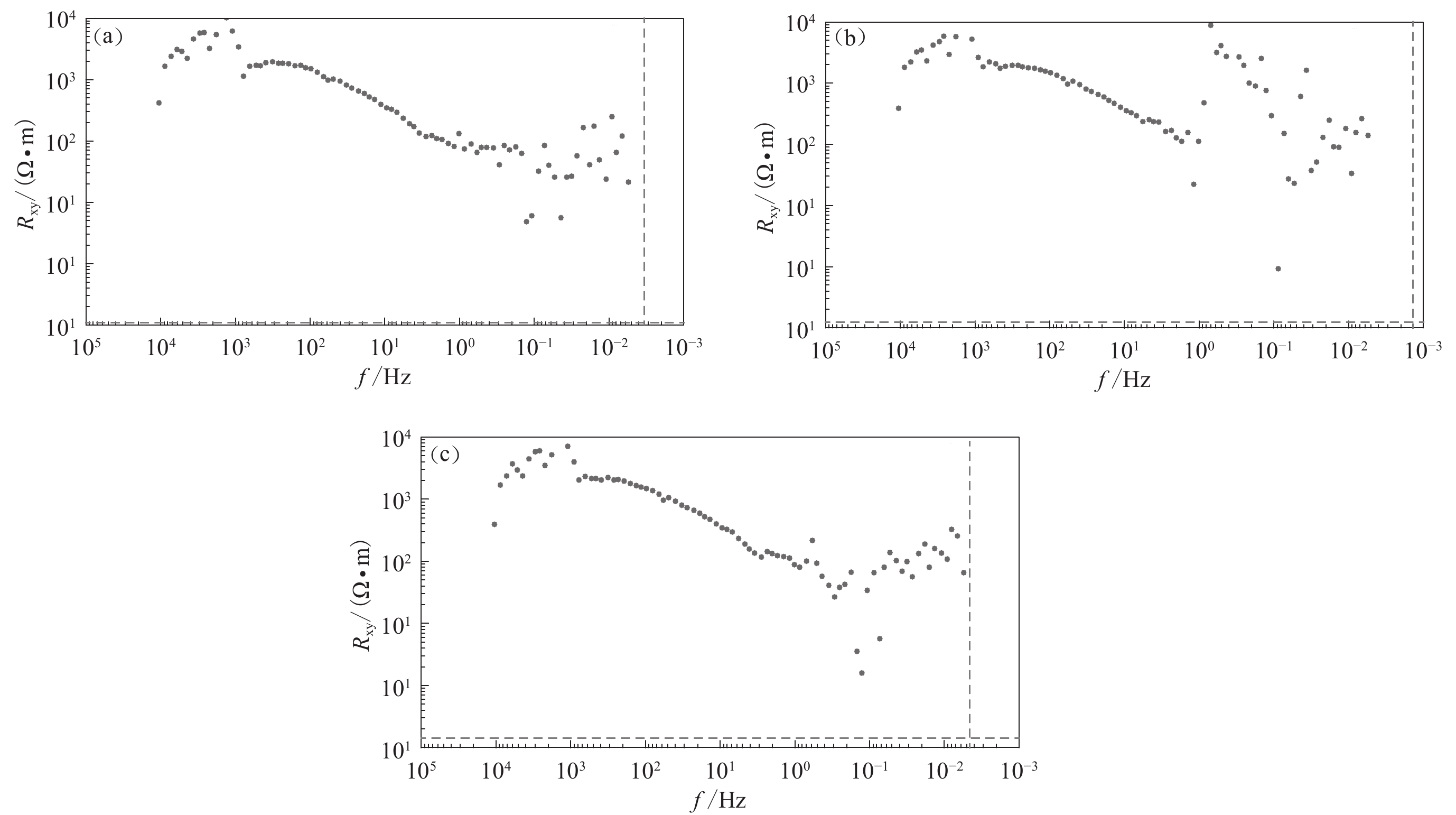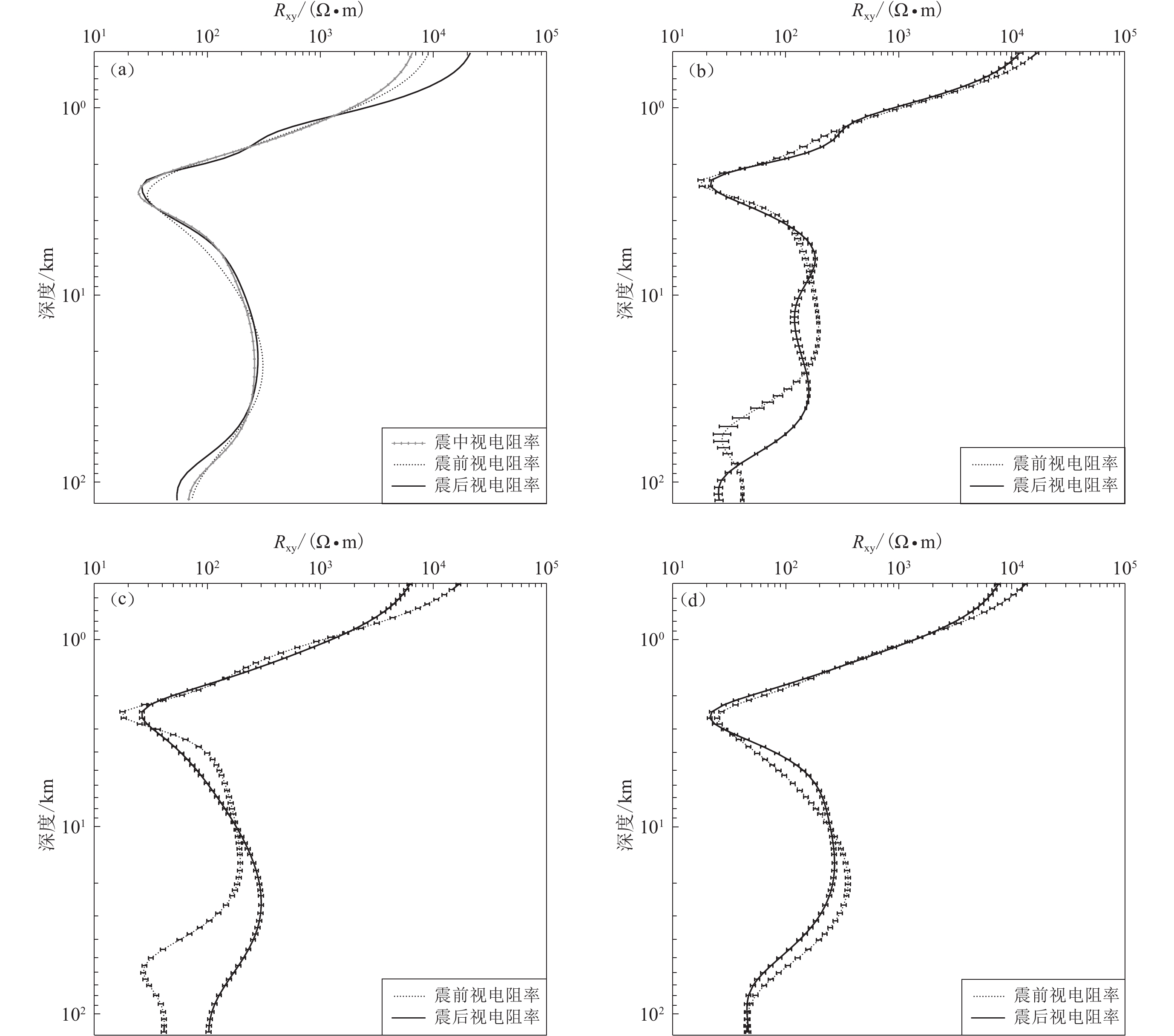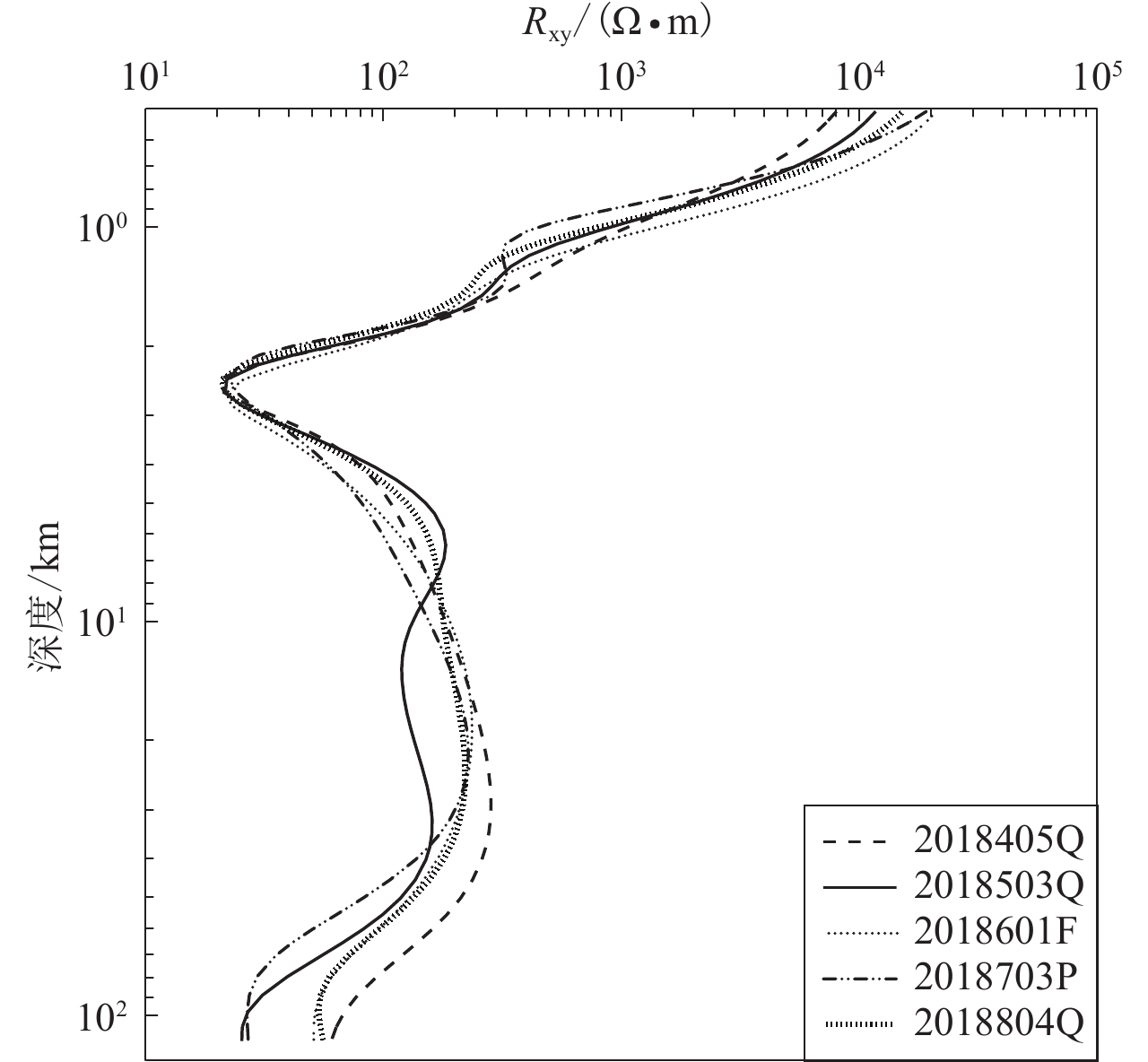Research on 1-D deep electrical structure in Hawaii
-
摘要: 利用加拿大凤凰公司在夏威夷大岛地区布设的长期大地电磁观测台站,选取2018年5月至2019年4月的观测数据,反演并获得了该台站下方大岛深部的电性构造及其随时间变化的特征,并将反演结果与前人探测结果进行对比。研究结果表明:在观测点下方2—3 km处存在一个明显的低阻薄层,电阻率大约为20 Ω·m,推测其可能是地表浅部发育的岩浆囊;100 km深处电阻率变化范围在20—70 Ω·m,推测该深度下可能为活跃的复杂岩浆储层,反演结果与前人在邻近地区的探测结果具有可比性。Abstract: Volcanic activity is closely related to deep magma transportation and material melting state. Long-term dynamic monitoring of volcanoes is helpful to master their deep structure and variation characteristics, and provides important geophysical evidence for predicting volcanic eruptions and volcanic earthquakes. We selecte the observation data from May 2018 to April 2019 for inversion, and the data come from a long-term magnetotelluric observation station set up by Phoenix Company in the Big Island, Hawaii. We obtain the deep electrical structure below the observation point and its time-varying characteristics, and compare the inversion results with the previous exploration results. The research results show that there is an obvious thin low-resistance layer at a depth of 2−3 km below the observation point, and its resistivity is about 20 Ω·m. It is speculated that it may be a magma chamber developed in the shallow part of the Earth’s surface. The range of resistivity at the depth of 100 km is 20−70 Ω·m. It is speculated that there may be an active complex magma reservoir at this depth. The inversion results are comparable with the previous exploration results in neighboring areas.
-
Keywords:
- Hawaii /
- magnetotelluric sounding /
- electrical structure /
- low resistivity body /
- magma chamber
-
-
图 4 火山地震发生前后地下电性变化示意图
图(b)−(d)线条上的短线为误差棒,误差棒的长短表示误差大小(a) 无地震发生;(b) 2018年5月3日;(c) 2018年5月4日;(d) 2018年6月8日
Figure 4. Schematic diagram of underground electrical changes before and after volcanic earthquakes
The short line on the curves of Figs.(b)−(d) is error bar,and the length of the bar represents the error size(a) No earthquake;(b) May 3,2018;(c) May 4,2018;(d) June 8,2018
表 1 夏威夷岛部分较大震级的地震事件
Table 1 Some earthquakes with large magnitude on Hawaii Island
发震日期 北纬/° 西经/° 深度/km mb 年-月-日 时:分 2018-05-03 20:30 19.34 155.07 6 5.1 2018-05-04 22:32 19.31 155.00 2 6.9 2018-06-08 12:44 19.41 155.28 −1 5.2 2018-07-02 11:24 19.39 155.27 −1 5.3 2019-03-13 10:55 19.33 155.20 7 5.5 2019-04-14 03:09 19.47 155.79 13 5.3 -
陈洪洲,高峰,吴雪娟,孟宪森. 2004. 从历史记录看地震与火山喷发关系[J]. 地震学报,26(4):448–453. doi: 10.3321/j.issn:0253-3782.2004.04.015 Chen H Z,Gao F,Wu X J,Meng X S. 2004. Relationship between earthquake and volcanic eruption inferred from historical records[J]. Acta Seismologica Sinica,26(4):448–453 (in Chinese).
傅征祥. 1991. 1983年11月16日夏威夷Kaoiki地震(MS=6.6)前后的小震震源机制解[J]. 地震学报,13(2):139–149. Fu Z X. 1991. Focal mechanisms of small quakes before and after the Kaoiki,Hawaii,earthquake (MS=6.6),November 16,1983[J]. Acta Seismologica Sinica,13(2):139–149 (in Chinese).
李世文,翁爱华,李建平,单玄龙,韩江涛,唐裕,张艳辉,王雪秋. 2020. 三维电性结构揭示的中国东北地区新生代火山深部起源[J]. 中国科学:地球科学,50(4):538–552. Li S W,Weng A H,Li J P,Shan X L,Han J T,Tang Y,Zhang Y H,Wang X Q. 2020. Deep origin of Cenozoic volcanoes in Northeast China revealed by 3-D electrical structure[J]. Science China Earth Sciences,63(4):533–547. doi: 10.1007/s11430-018-9537-2
仇根根,裴发根,方慧,杜炳锐,张小博,张鹏辉,袁永真,何梅兴,白大为. 2014. 长白山天池火山岩浆系统分析[J]. 地球物理学报,57(10):3466–3477. doi: 10.6038/cjg20141032 Qiu G G,Pei F G,Fang H,Du B R,Zhang X B,Zhang P H,Yuan Y Z,He M X,Bai D W. 2014. Analysis of magma chamber at the Tianchi volcano area in Changbai mountain[J]. Chinese Journal of Geophysics,57(10):3466–3477 (in Chinese).
汤吉,刘铁胜,江钊,赵国泽,王继军,詹艳. 1997. 长白山天池火山区大地电磁测深初步观测[J]. 地震地质,19(2):69–72. Tang J,Liu T S,Jiang Z,Zhao G Z,Wang J J,Zhan Y. 1997. Preliminary observations of the Tianchi volcano area in Changbaishan mountain by MT method[J]. Seismology and Geology,19(2):69–72 (in Chinese).
汤吉,邓前辉,赵国泽,李文军,宣飞,晋光文,白登海,詹艳,梁竞阁,蒲兴华,王继军,李国深,洪飞,马明志,陈风学. 2001. 长白山天池火山区电性结构和岩浆系统[J]. 地震地质,23(2):191–200. doi: 10.3969/j.issn.0253-4967.2001.02.008 Tang J,Deng Q H,Zhao G Z,Li W J,Xuan F,Jin G W,Bai D H,Zhan Y,Liang J G,Pu X H,Wang J J,Li G S,Hong F,Ma M Z,Chen F X. 2001. Electric conductivity and magma chamber at the Tianchi volcano area in Changbaishan mountain[J]. Seismology and Geology,23(2):191–200 (in Chinese).
汤吉,王继军,陈小斌,赵国泽,詹燕. 2005. 阿尔山火山区地壳上地幔电性结构初探[J]. 地球物理学报,48(1):196–202. doi: 10.3321/j.issn:0001-5733.2005.01.026 Tang J,Wang J J,Chen X B,Zhao G Z,Zhan Y. 2005. Preliminary investigation for electric conductivity structure of the crust and upper mantle beneath Aershan volcano area[J]. Chinese Journal of Geophysics,48(1):196–202 (in Chinese).
王立凤,赵国泽,陈小斌,汤吉,蔡军涛,詹艳,韩冰,程远志,赵凌强,肖骑彬. 2017. 芦山MS7.0地震余震期间大地电磁视电阻率变化[J]. 地震学报,39(1):64–77. doi: 10.11939/jass.2017.01.006 Wang L F,Zhao G Z,Chen X B,Tang J,Cai J T,Zhan Y,Han B,Cheng Y Z,Zhao L Q,Xiao Q B. 2017. Variation of magnetotelluric apparent resistivity during the major aftershock period of Lushan earthquake in epicentral area[J]. Acta Seismologica Sinica,39(1):64–77 (in Chinese).
张炯,黄少鹏,傅饶,唐晓音. 2017. 大地电磁测深在火山区地热研究中的应用[J]. 岩石学报,33(1):279–290. Zhang J,Huang S P,Fu R,Tang X Y. 2017. Application of magnetotellurics in geothermal exploration and research in volcano areas[J]. Acta Petrologica Sinica,33(1):279–290 (in Chinese).
中国地震台网中心国家地震科学数据中心. 2021. 中国台网正式地震目录[EB/OL]. [2021-04-08]. https://data.earthquake.cn/datashare/report.shtml?PAGEID=earthquake_zhengshi. China Earthquake Networks Center, National Earthquake Data Center. 2021. Official earthquake catalogue of China Seismic Network[EB/OL]. [2021-04-08]. https://data.earthquake.cn/datashare/report.shtml?PAGEID=earthquake_zhengshi (in Chinese). Mooney W. 2018. 美国地质调查局火山灾害项目与2018年夏威夷基拉维厄火山喷发概况[J]. 魏费翔译. 城市与减灾, (5): 84−91. Mooney W. 2018. Overview of the united states geological survey volcano hazard program and the 2018 Kilauea (Hawaii) Eruption[J]. Wei F X trans. City and Disaster Reduction, (5): 84−91 (in Chinese).
Abdallah S,Utsugi M,Aizawa K,Uyeshima M,Kanda W,Koyama T,Shiotani T. 2020. Three-dimensional electrical resistivity structure of the Kuju volcanic group,Central Kyushu,Japan revealed by magnetotelluric survey data[J]. J Volcanol Geoth Res,400:106898. doi: 10.1016/j.jvolgeores.2020.106898
Aizawa K,Kanda W,Ogawa Y,Iguchi M,Yokoo A,Yakiwara H,Sugano T. 2011. Temporal changes in electrical resistivity at Sakurajima volcano from continuous magnetotelluric observations[J]. J Volcanol Geotherm Res,199(1/2):165–175. doi: 10.1016/j.jvolgeores.2010.11.003
Bartel L C,Hardee H C,Jacobson R D. 1983. An electrical resistivity measurement in molten basalt during the 1983 Kilauea eruption[J]. Bull Volcanol,46(3):271–276. doi: 10.1007/BF02597561
Benz H M,Okubo P,Villaseñor A. 2002. Three-dimensional crustal P-wave imaging of Mauna Loa and Kilauea volcanoes,Hawaii[J]. Int Geophys,81:407–420.
Constable S,Heinson G. 2004. Hawaiian hot-spot swell structure from seafloor MT sounding[J]. Tectonophysics,389(1/2):111–124.
Díaz D,Brasse H,Ticona F. 2012. Conductivity distribution beneath Lascar volcano (Northern Chile) and the Puna,inferred from magnetotelluric data[J]. J Volcanol Geotherm Res,217-218:21–29. doi: 10.1016/j.jvolgeores.2011.12.007
Díaz D,Zúñiga F,Castruccio A. 2020. The interaction between active crustal faults and volcanism:A case study of the Liquiñe-Ofqui fault zone and Osorno volcano,Southern Andes,using magnetotellurics[J]. J Volcanol Geotherm Res,393:106806. doi: 10.1016/j.jvolgeores.2020.106806
Lei J S,Zhao D P. 2006. A new insight into the Hawaiian plume[J]. Earth Planet Sci Lett,241(3/4):438–453.
Lin G Q,Amelung F,Lavallée Y,Okubo P G. 2014. Seismic evidence for a crustal magma reservoir beneath the upper east rift zone of Kilauea volcano,Hawaii[J]. Geology,42(3):187–190. doi: 10.1130/G35001.1
Matoza R S,Okubo P G,Shearer P M. 2021. Comprehensive high-precision relocation of seismicity on the island of Hawaii 1986-2018[J]. Earth Space Sci,8(1):e2020EA001253.
Nettles M,Ekström G. 2004. Long-period source characteristics of the 1975 Kalapana,Hawaii,earthquake[J]. Bull Seismol Soc Am,94(2):422–429. doi: 10.1785/0120030090
Witze A. 2013. Earth science:Under the volcano[J]. Nature,504(7479):206–207. doi: 10.1038/504206a
Wright T L,Klein F W. 2006. Deep magma transport at Kilauea volcano,Hawaii[J]. Lithos,87(1/2):50–79.
-
期刊类型引用(4)
1. 赵一帆,王毅. 基于三重震相波形模拟的东北亚地区上地幔S波速度结构研究. 物探化探计算技术. 2024(02): 137-145 .  百度学术
百度学术
2. 苏慧,魏荣强,周元泽,崔清辉,李国辉. 东北亚边缘地区地幔过渡带内滞留太平洋板片上界面的三重震相研究. 地球物理学报. 2023(06): 2431-2444 .  百度学术
百度学术
3. 崔辉辉,周元泽,石耀霖,王晓冉,李国辉. 华北克拉通东部滞留板块下方低速异常的地震三重震相探测. 地球物理学报. 2016(04): 1309-1320 .  百度学术
百度学术
4. 李国辉,眭怡,周元泽. 基于P波三重震相的下扬子克拉通地幔转换带顶部低速层初探. 地球物理学报. 2014(07): 2362-2371 .  百度学术
百度学术
其他类型引用(11)




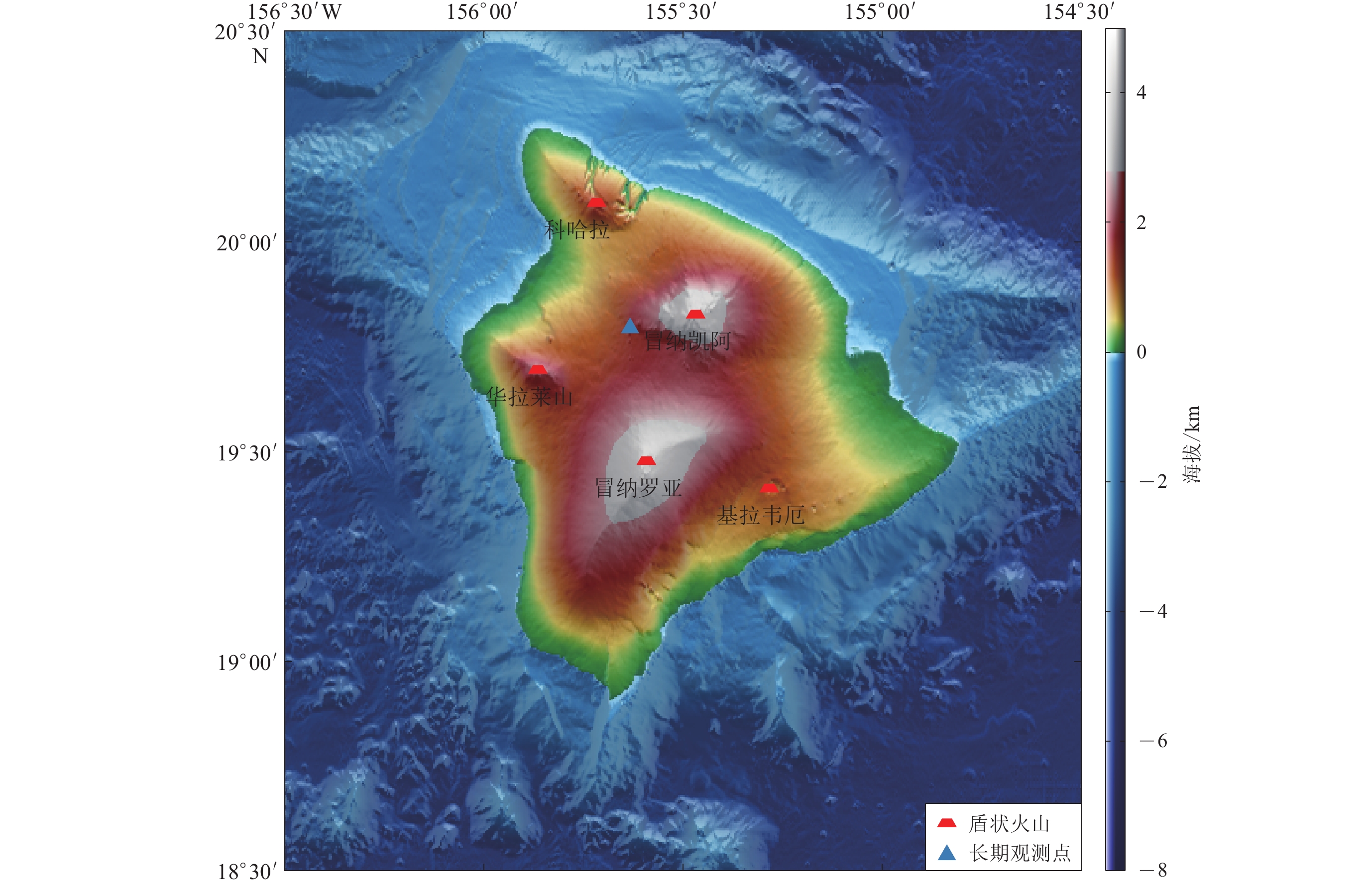
 下载:
下载:
